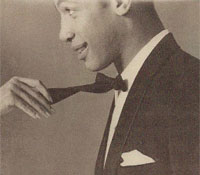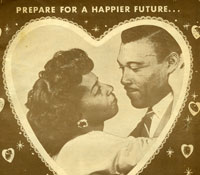With the increased buying power of black Americans, big business took note of the black consumer market. In the early years of the civil rights movement, ads featuring nonmenial black characters and celebrities were relegated to African American periodicals. While some companies provided ads to these magazines that were race-neutral or featured white actors, others retrofitted existing campaigns or designed new ones to appeal to black readers.
As the movement drew to a close in the early-1970s, mainstream publications accepted and promoted marketing campaigns directed at black readers. A far cry from the amiable and compliant black servants who populated print advertisements for much of the twentieth century, the subjects of these ads were more or less positive.
Image Credits/Captions (Click on thumbnails for full image)
The Next Affair You Have, Make It A Formal, 1963. Print Advertisement. 13 x 9 3/4 in. Collection of Civil Rights Archive/CADVC-UMBC, Baltimore, MD, Anonymous Gift
Gold Medal, 1957. 11 x 8 5/16 x 1/16 in. Collection of Civil Rights Archive/CADVC-UMBC, Baltimore, MD, 2005.188. As conventional women’s publications such as Harper’s Bazaar, Glamour, and Vogue clung to the ideals of white beauty (U.S. Vogue did not put a black model on its cover until Beverly Johnson was featured in 1974), periodicals like Tan and Essence celebrated the beauty, intelligence, talent, and aspirations of female African-Americans. To further these aspirations, black hairstyle and cosmetic companies reached out to women long ignored by businesses invested in the virtues of white skin or blondness.

